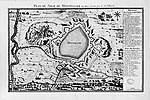Roman Catholic Archdiocese of Montpellier

The Roman Catholic Metropolitan Archdiocese of Montpellier (–Lodève–Béziers–Agde–Saint-Pons-de-Thomières) (Latin: Archidioecesis Metropolitae Montis Pessulani (–Lotevensis–Biterrensis–Agathensis–Sancti Pontii Thomeriarum); French: Archidiocèse Metropolitain de Montpellier (–Lodève–Béziers–Agde–Saint-Pons-de-Thomières)) is an archdiocese of the Latin Church of the Roman Catholic Church in south-western France. It was probably created in the 3rd century AD. The current metropolitan archbishop is Pierre-Marie Carré; the immediate past Archbishop Emeritus is Guy Marie Alexandre Thomazeau. On September 16, 2002, as part of the reshuffling of the map of the French ecclesiastical provinces, the diocese of Montpellier (Lodève, Béziers, Agde, and Saint-Pons-de-Thomières) ceased to be a suffragan of Avignon and was elevated to archdiocese and metropolitan of a new ecclesiastical province, with the dioceses of Carcassonne, Mende, Nimes (Uzès and Alès) and Perpignan–Elne as suffragans.
Excerpt from the Wikipedia article Roman Catholic Archdiocese of Montpellier (License: CC BY-SA 3.0, Authors, Images).Roman Catholic Archdiocese of Montpellier
Rue Lallemand, Montpellier Centre
Geographical coordinates (GPS) Address Nearby Places Show on map
Geographical coordinates (GPS)
| Latitude | Longitude |
|---|---|
| N 43.613611111111 ° | E 3.8752777777778 ° |
Address
Evêché
Rue Lallemand
34062 Montpellier, Centre
Occitania, France
Open on Google Maps










